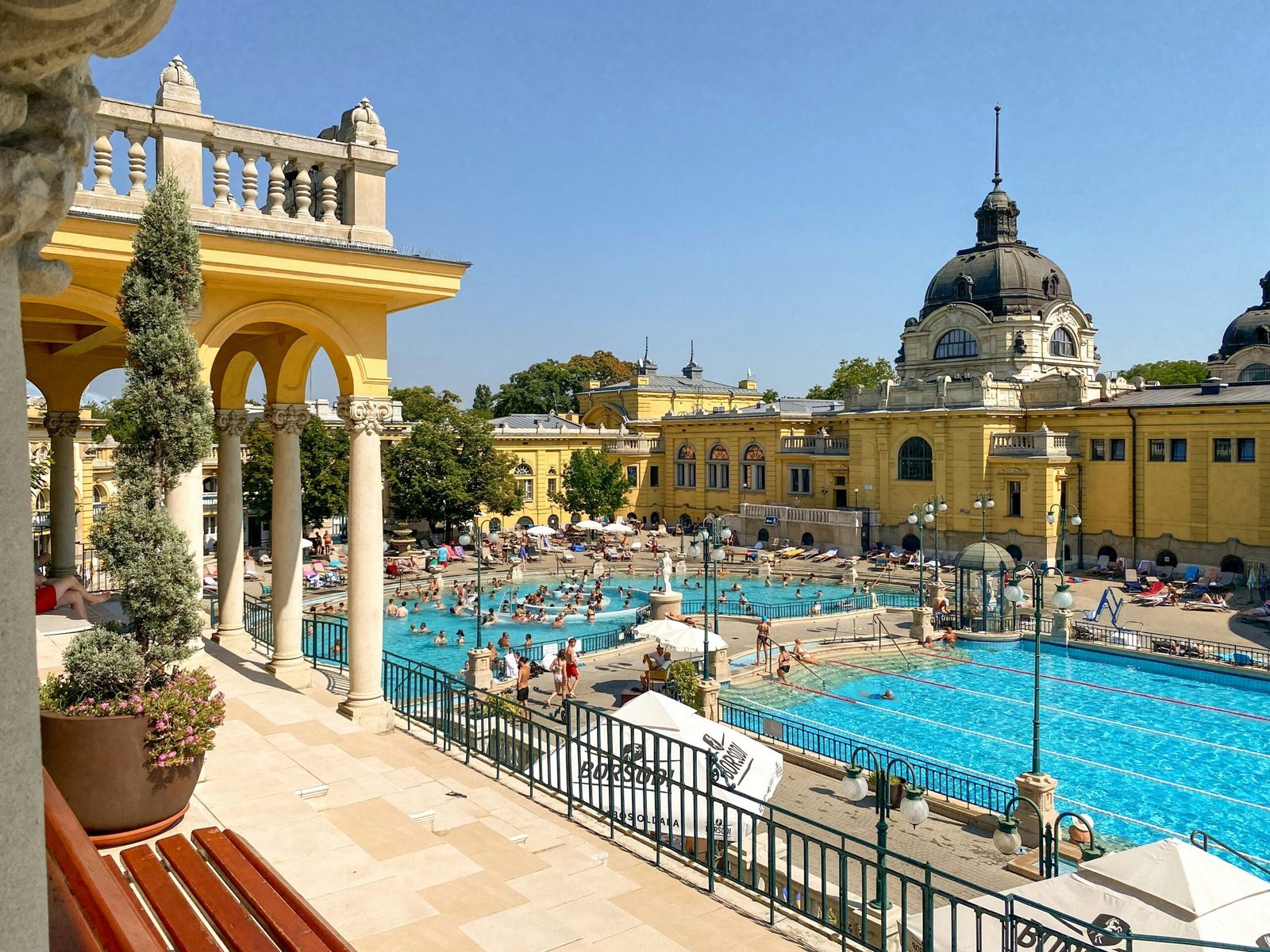
The Historical Significance of Thermal Baths in Hungary
The rich history of thermal baths in Hungary is a testament to the country’s longstanding tradition of wellness and relaxation. The origins of these natural hot springs date back to Roman times, a period during which the Romans recognized the therapeutic benefits of Hungary’s abundant geothermal waters. Early baths were constructed in the region of Aquincum, now part of modern-day Budapest, establishing a foundation for what would become a deeply ingrained cultural practice.
Significant developments in the use of thermal baths occurred during the Ottoman occupation in the 16th and 17th centuries. The Ottomans, who had their own rich bathing culture, integrated these practices with the existing thermal springs, leading to the construction of numerous bathhouses, many of which still stand today. This period saw the blending of Middle Eastern architectural styles with local building methods, resulting in unique structures that were not only places of leisure but also of social and communal gathering. The Rudas and Király Baths in Budapest are prime examples of these Ottoman-influenced edifices, featuring traditional domed roofs and octagonal pools.
Throughout the centuries, thermal baths have continued to be a significant part of Hungarian culture. During the Austro-Hungarian Empire, the trend of visiting spa towns for health reasons flourished, leading to the expansion and modernization of many bathhouses. This era brought about architectural splendor, with intricate designs and elaborate decorations, as seen in the renowned Széchenyi and Gellért Baths. These bathhouses became symbols of sophistication and health, promoting the idea that thermal bathing was an integral part of a refined lifestyle.
Today, the thermal baths in Hungary remain important historical landmarks, attracting both locals and tourists. They stand as a testament to the enduring allure of Hungary’s geothermal heritage and its evolution over millennia. By preserving these bathhouses, Hungary not only honors its past but also ensures that future generations can experience the timeless tradition of thermal bathing.
The Health Benefits of Thermal Bathing
Thermal bathing in Hungary, with its rich history and bountiful thermal waters, stands as a beacon of natural wellness. These geothermal wonders, brimming with an array of minerals, offer myriad health benefits that cater to both physical and mental well-being. Among the most noted minerals found in Hungary’s thermal waters are calcium, magnesium, and sulfur, each playing a crucial role in enhancing health.
Calcium is renowned for its ability to strengthen bones and alleviate joint pain, making thermal baths an excellent remedy for those suffering from arthritis and other joint-related ailments. Magnesium, on the other hand, serves to soothe muscle tension and improve circulation, providing relief to fatigued and overworked muscles. Sulfur is particularly beneficial for skin conditions such as psoriasis and eczema, due to its antibacterial and anti-inflammatory properties.
Dr. István Szabó, a prominent rheumatologist, has noted, “Regular immersion in thermal waters can significantly reduce inflammation and pain in patients with chronic musculoskeletal conditions. The mineral-rich content helps in speeding up recovery and providing sustained relief.”
Beyond these targeted health benefits, thermal bathing also promotes overall wellness. The naturally warm waters encourage relaxation and stress relief, improving mental health. Visitors often report a sense of rejuvenation and increased energy following their bathing sessions, thanks to the endorphin release induced by the warm temperatures.
Testimonials from frequent visitors further underscore these health benefits. Anna Kovács, a regular at Széchenyi Thermal Bath, shares, “After just a few sessions, my eczema has noticeably improved and I find myself less stressed. It’s become a part of my weekly routine for both my skin and my sanity.”
Whether it’s alleviating joint and muscle pain, improving skin conditions, or boosting overall wellness, the health benefits of Hungary’s thermal baths are substantiated by both scientific studies and the experiences of countless visitors. As our understanding of these benefits continues to grow, so too does the allure of these ancient waters.
Top Thermal Baths to Visit in Hungary
Hungary is home to an array of thermal baths renowned for their therapeutic properties and historical charm. Among the most celebrated are the Széchenyi Baths, located in Budapest. As one of Europe’s largest bath complexes, Széchenyi offers a plethora of indoor and outdoor pools, saunas, and treatment rooms. Known for its neo-baroque architecture and the iconic chess-playing locals, visiting Széchenyi is not only rejuvenating but also a cultural experience. It’s recommended to visit early in the morning or late evening to avoid the crowds, and don’t forget to bring your own towel and flip-flops to enhance your comfort.
Another famous landmark is the Gellért Baths, situated within the grand Gellért Hotel. The art nouveau design of Gellért Baths makes it one of the most picturesque destinations, with intricate mosaic designs, stained glass windows, and marble columns. This bath is known for its therapeutic water, rich in calcium, magnesium, and hydrogen carbonate, ideal for easing joint pain and improving circulation. Arriving during weekdays can offer a more serene experience compared to the bustling weekends. Additionally, bathing caps are mandatory in the swimming pools, so be sure to pack one.
For those looking to explore beyond Budapest, the Hévíz Thermal Lake is a must-visit gem. As the largest thermal lake in Europe, the natural warm waters of Hévíz remain inviting throughout the year. The lake’s peaty bed and rich mineral content have made it a popular destination for therapeutic treatments, particularly for those suffering from rheumatic diseases. Early morning visits offer a tranquil atmosphere and the opportunity to witness the mist rising off the lake’s surface. Visitors should bring swim shoes due to the peaty lake bed.
Lastly, the Miskolctapolca Cave Baths in northeastern Hungary provide a unique experience, combining the benefits of thermal waters with an enchanting subterranean setting. The naturally warm waters, winding corridors, and thermal pools within a scenic limestone cave make this bath truly distinctive. Given its popularity, arriving early or booking in advance can ensure a more relaxed visit. Packing a waterproof camera can help capture the breathtaking underground vistas.
Cultural and Social Aspects of Visiting Thermal Baths
Immersing oneself in the thermal baths of Hungary involves much more than just enjoying the therapeutic waters; it’s an experience steeped in cultural traditions and social etiquette. Visitors should become familiar with several key customs and rules to fully appreciate and respect this unique facet of Hungarian life.
Firstly, adherence to hygiene standards is paramount. Visitors are generally required to shower before entering the pools to maintain cleanliness. In many traditional baths, specific attire is also mandated, with some facilities favoring swimsuits while others may have communal baths where clothing is optional or even prohibited. Understanding and adhering to these rules is important to avoid any cultural missteps.
Thermal baths in Hungary are not just about personal relaxation; they are also vital social spaces. Locals often visit these baths to congregate, socialize, and forge community connections. It is common to see groups of friends or family members chatting and catching up while soaking in the warm waters. The baths serve as a communal hub, where people of all ages come together to unwind and engage in meaningful conversations.
Additionally, the thermal baths are venues for traditional practices, such as aqua aerobics and chess. Engaging in a game of chess while submerged up to the chest in warm water is a time-honored tradition that many Hungarians cherish. Classes and activities like water aerobics are also popular, blending relaxation with physical wellness.
Anecdotes from both locals and tourists reveal the warmth and camaraderie that characterize these experiences. Many visitors recount the friendly interactions with locals, who often share stories and tips about the best bathhouses and traditions. Such exchanges enrich the experience, providing a deeper understanding of how thermal baths seamlessly integrate into the daily lives and social fabric of Hungary.
Venturing into a Hungarian thermal bath is, therefore, not just a retreat into relaxation but a dive into the cultural heart of the country, where age-old traditions meld with contemporary social practices.

